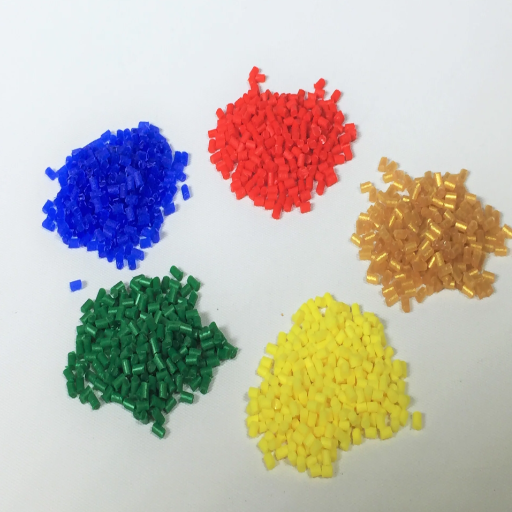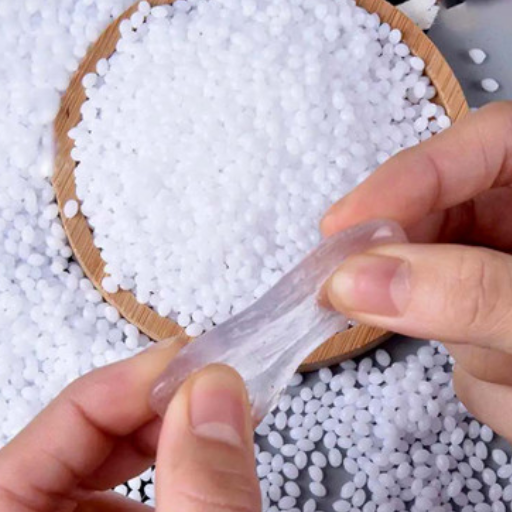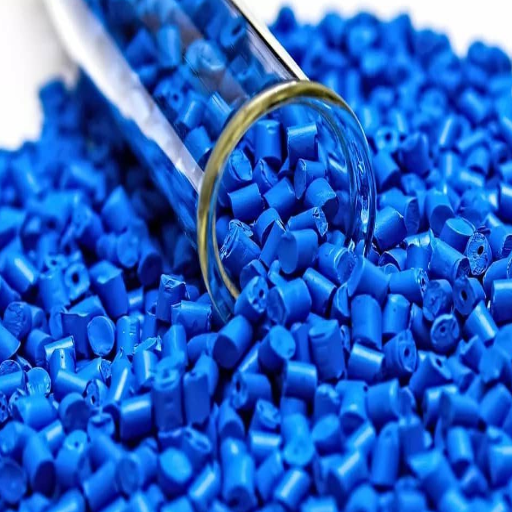Thermoplastic elastomers (TPEs), which offer unique features and versatility, have become a top candidate competition alongside silicone in evaluating materials for various use cases. These materials, however, are common in production, healthcare, or consumer products; they have key points of difference that make them more appropriate for particular applications. This blog is intended to analyze thermoplastic elastomers and silicone, focusing on their physical characteristics, performance attributes, and pros or cons. Such insight can allow readers to understand why these two materials are different so that one can select the right material for their case.
What are TPEs and Silicone, and how do they differ?
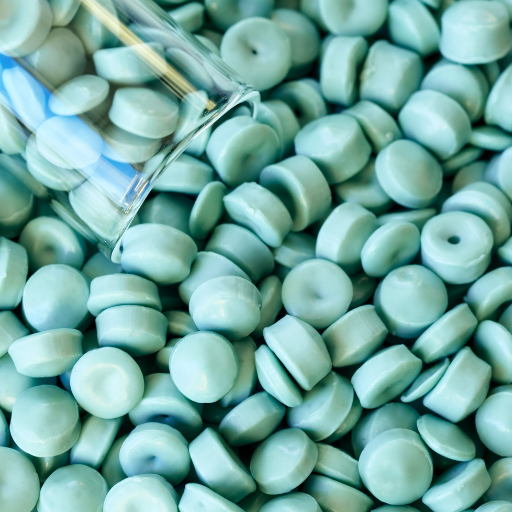
Thermoplastic elastomers (TPEs) are a unique group of polymers which have characteristics of rubbers and plastic materials. Thanks to their flexibility and durability, they possess a high degree of adaptability, are recyclable, and hence can be injected and withdrawn in various forms, which justifies their usage in demanding circumstances. On the other hand, the most prominent ingredient of silicone is silicon, along with other elements such as oxygen, deals with the process of synthesis. It is well known for maintaining its properties under extreme high and low temperature values, making it chemically inert, and resistant to changes when in contact with biotic material. This makes TPEs suitable for applications that require dynamic mechanical performance and protection of surroundings during the manufacturing process. Whereas silicone minimizes chemical reactions during TPE’s applications in high-temperature operating environments and aims for medical-grade applications.
Defining TPE: Thermoplastic Elastomer explained
TPE’s are unique materials due to their properties which resemble that of an elastomer and that of a thermoplastic elastomer. Typically, the formation of such materials is characterized by the presence of hard and soft phase domains, which, when formed, aggregate into a physically cross-linked structure. Such polymers demonstrate exceptional recovery behavior while recovering their shape. Because of the structure, they do not undergo much alteration even after extensive melting, reshaping or reprocessing, which makes them highly thermally recyclable. The elastic nature of these materials can be superseded to membranelike structures whilst the thermoplastic phase enhances the mechanical characteristics and modifies the processing conditions.
TPEs have specific properties such as a thermal operating range of -40°F and 275°F (-40°C to 135°C), a Shore hardness ranging between 5A and 70D, and a tensile strength of 500 psi to 4000 psi dictated by the TPE formulations. This substantiates their wide usage in automotive seals, footwear, and other consumer goods where flexibility, strength, and low cost are of utmost importance.
The role of silicone in making elastic materials – the basics
Silicone rubber, synthesized from silicon, carbon, hydrogen and oxygen, is one of the most adaptable elastomers available. Its most vital characteristics derive from the distinct molecular configuration with the silicon-oxygen structure as its backbone. This arrangement provides to silicone rubber the ability to function within a temperature span of minus sixty degrees Celsius and minus sixty degrees Fahrenheit to as high as three hundred degrees Celsius and over five hundred degrees Fahrenheit. Silicone rubber is highly demanded due to its high and low-temperature tolerance and unparalleled protection against environmental factors such as rain, ozone, and sun damage.
Silicone rubber possesses a Shore hardness ranging from 10A to 80A, while its tensile strength starts from 700 psi and can go as far as 1400 psi. Additionally, it has an elongation at break that can range between 100%-900%. As a result, it is fairly elastic and tough, which is an appealing quality. Moreover, silicone rubber is chemically inert and biocompatible, making it favorable for the medical, automotive, and electrical industries, where safety and accuracy are paramount. These technical attributes do explain its extensive application in sealing, insulation, and other specialized manufacturing processes.
Differentiate between TPE and Silicone elastomers
Thermoplastic elastomers (TPE) are markedly different from silicone materials in terms of chemical structure, performance characteristics, and possible fields of application. A thermoplastic elastomer, aka TPE is defined as an elastomeric polymer that can be processed similarly to common plastics since TPE has both thermoplastic and elastomeric properties. Silicone, in contrast, is a thermosetting polymer since it hardens to prevent remelting and reshaping due to the cross linking that occurs.
Considering the temperature range applicable to a TPE, it is typically from -22°F to 248°F (-30°C and 120°C), while that for silicone is usually between -76°F to 572°F (-60°C and 300°C), thus being a better choice for extreme applications. Also, silicone exhibits far greater resistance than TPE to ozone, UV light, and weathering; silicone is more chemically stable over time qualitatively than TPE under the same mechanical and thermal stresses.
Regarding mechanical properties, however, TPE typically has a more elastic makeup with a shore hardness level of 20A-85A. While that silicone is between 10A and 80A, they can be comparable in certain applications. The better option, especially where elongation at break is a consideration, would be silicone, which has an elongation percentage up to 900% compared to the 600% range of TPE. Shear force tolerance is the other side of the spectrum. TPE has an advantage because it has higher shear tolerances than silicone. Furthermore, shearing forces may be utilized better when utilizing silicone for sealing and TPE for load and stress-bearing surfaces because silicone is more slacking with chemical activity and is biologically suitable.
All of these factors determine which type of material is applicable under specified temperature limits, chemicals, the load to be applied, and environmental conditions.
How do the manufacturing processes for TPE and Silicone compare?
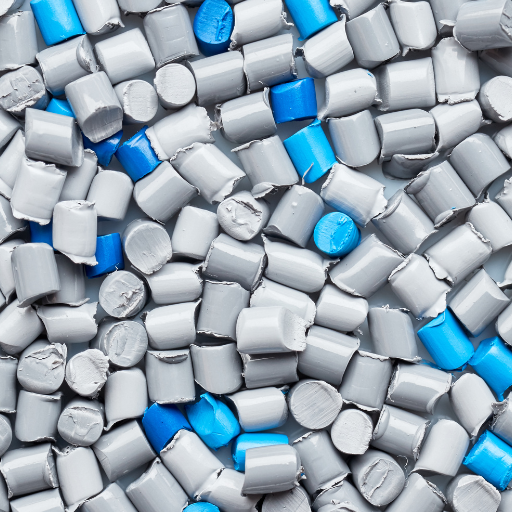
Thermoplastic elastomers (TPEs) are produced through thermoplastic configurations, mainly injection molding and extrusion. In addition, all these methods allow TPE to be melted, shaped and cooled many times, which means that it can be considered highly recyclable and effective in mass production. However, silicone does not melt; it has to undergo vulcanization (curing), in which the chemical bonds of cross-linked polymer chains are joined through chemical reactions of heat or catalysts. This process also means that silicone is thermoset, it cannot be remelted or reshaped after curing. TPE, on the other hand, enables oil and most solvents to wash off the check easily. The curing of silicone improves the fine structures and enhances the thermal stability and durability of the material, mostly for specialized functions.
TPE production: injection molding and extrusion techniques
The production of Injection molding and extrusion processes are the two key techniques that fall under TPE production. In the process of injection molding, TPE material is heated to a molten state into which TPE is entered before it is injected into a mold cavity to achieve its later form as it cools down. This process is very effective and ideal for producing complex geometries in bulk. On the other hand, extrusion involves forcing the molten TPE through a die so as to produce long and uniform profiles in the form of tubes or sheets. Thermoplastic elastomers also retain TPE characteristics that make it economical, while eliminating repeatability and precision deficiency in the manufacturing processes.
Silicone manufacturing: Liquid Silicone Rubber and methods of curing
Liquid Silicone Rubber, known as LSR, is a two-part system composed of a polymer and a crosslinker with certain other components to enhance the functional properties of the polymer. This Material is Nasty of CA, and therefore it has a lot more flexibility and biocompatibility and great resistance to extreme temperatures. The silicone is prepared with the help of specialized injection molding techniques operating at high temperatures which guarantee enough consistency and reproducibility. Crosslinking of silicon molecules is done by heat during the curing process, which is normally done under the influence of platinum-catalyzed addition reactions. As a result, silicone becomes durable, stable chemically, and elastic and can hence be used in medical devices, automotive or consumer goods. Advanced techniques to cure silicones have also enabled shorter manufacturing times without loss of quality or performance.
Assessment of recyclability and reprocessing options
Regarding recycling and reclaiming, the advantage is always on the side of thermoplastics as compared to LSR-filled thermoset materials. Thermoplastics are more easily recycled and reused because they can be melted and re-formed repeatedly with little loss in product quality. On the other hand, LSR is classified as a thermosetting material that is permanently cured, so it is conventionally highly impossible to recycle. Even if some transformations, such as chemical recycling, are applied to LSR in the future, thermoplastic applications will still be far behind. Thus, it is correct to state again that while the performance characteristics are outstanding, the disadvantage of LSR is that it has less thermoplastic recyclability.
What are the temperature resistance properties of TPE vs Silicone?
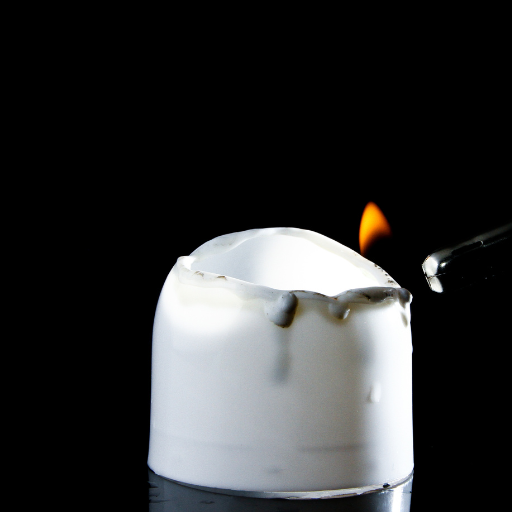
Temperature resistance differs considerably between Thermoplastic elastomers (TPE) and Silicones. Most grades of TPE can withstand temperatures from -30℃ to 140℃, although these are a little on the lower end. Similarly, TPE can overheat as well if it is under a constant temperature for a longer period. Silicones are but more superior as they are much able to stick around certain critical temperature ranges, such ranges are typically -50℃ to 250℃, that is with some silicones which need to work above 300℃. It is this very property that aids silicone in having a wide range of uses, even at severe temperatures. This stands in contrast to the TPE which has lower heat endurance and lower cost and is better used in areas with average temperatures.
TPE’s Thermal Resistance Medium Temperatures To High Temperatures
TPE’s heat resistance is largely determined by its specific formulation and grade. Generally, TPE can endure temperatures ranging from -30°C to 140°C (-22°F to 284°F), making it suitable for applications in moderate thermal environments. However, exceeding this range—particularly with prolonged exposure beyond 140°C—can result in material deformation, degradation, or a loss of elasticity and tensile strength. This limitation arises from TPE’s molecular structure, which combines elastic and plastic properties. Additionally, TPE grades that include higher-performance additives or blends can exhibit slightly enhanced heat resistance, but they still fall short compared to high-temperature polymers like silicone. Therefore, when designing components for high-heat scenarios, careful consideration of thermal requirements is critical to ensure the mechanical integrity and longevity of the material.
Silicone’s High Temperature Endurance And Melting Point
Silicone can easily endure high temperatures as its composition allows it to tolerate staggering temperatures from -50 degrees Celsius to 200 degrees Celsius and, in some cases, skip the extremes by up to 300 degrees Celsius, decreasing the need for additives. Unlike many other thermoplastics, silicone does not lose its flexibility and elasticity even at high temperatures. This makes it ideal for automotive, aerospace, and industrial building applications. Silicate degradation exceeds 300 degrees Celsius without melting into a liquid phase this allows a room temperature transition for the extreme environments where silicon functions. This sets silicone apart due to its strength and thermal stability, which makes it an excellent substance for high-temperature usage.
TPE vs. Silicone for temperature-sensitive applications
Various factors influence my decision to use either TPE or silicone for temperature-containing applications, though the specified performance requirements are the most important. Silicone is useful in high-temperature environments as it can retain its flexibility, its elasticity, and its stability (at least grade 200) at temperatures of 200 degrees Celsius (392 degrees Fahrenheit) and above. Yes, TPE is very functional and cheap but is usually less heat resistant, making it unsuitable for prolonged spans in extreme heat environments. Silicone would be a better choice for any application with high-temperature set points spanning for an extended period or requiring high thermal stability.
How do TPE and Silicone compare in terms of chemical resistance?
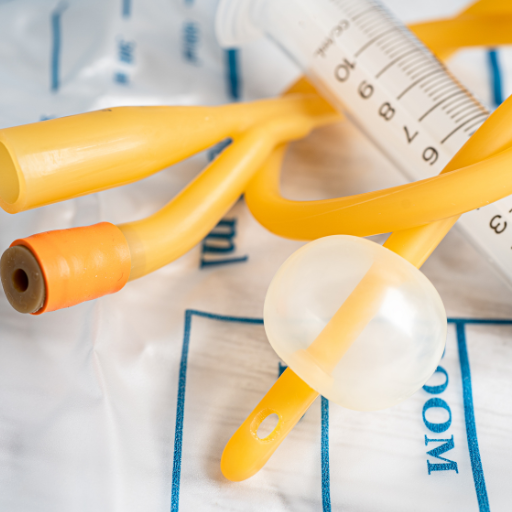
TPE and silicone differ in their chemical compatibility ranges. For instance, silicone is highly compatible with several substances, such as acids, oils, solvents, and even bases. This makes it useful in tough applications. Its atomic makeup is such that it is durable in harsh environments regardless of the period of exposure. Conversely, TPE has good chemical resistance but not to the extent that silicone does. Depending on its formulation and the specific chemicals, this type of elastomer could get damaged when exposed for extended periods. Most oils and solvents are less chemically compatible with Tpe, so its durability is weak against them. Hence in instances where parts are designed with the understanding that they will be in contact with chemicals for a long time, silicone parts are more preferred.
TPE’s chemical resistance profile
TPE’s chemical resistance is dependent on its specific formulation, which is a blend of thermoplastic and elastomeric materials. As a rule of thumb, TPEs have poor performance with weak acids, bases, and some aqueous solutions, but this performance is temperature and time-dependent. TPEs are relatively poor in resistance to hydrocarbons, oils, and organic solvents since their continuous usage results in swelling, softening or dissolution. For example, variations in the styrene content of styrenic TPEs and olefinic TPEs lead to differences in breadth and degree of general chemical compatibility. Thus, specific compounds should be evaluated for compatibility with certain chemicals at definite temperatures, concentrations, and exposure times when selected for chemical containment and control applications. This makes TPEs appropriate in some applications but not when exposed to extreme conditions or aggressive environments.
Features Of Silicon That Enhance Its Chemical Stability
Silicone is known for its excellent chemical stability and is useful in extreme circumstances. It is quite a good stabilizer for acids, alkalis, and oxidizing agents as it can withstand many of them. Unlike a majority of polymers, silicone’s structure, mechanical strength as well as its physical properties do not change even in intense environments, such as extreme temperatures, high amounts of UV rays and oxidization. It’s inactive properties and low reactivity level ensure that the contact with active elements is low, which contributes to extensive usage of silicone in medical devices, car components, and several machines where acknowledgment of high strength and reliability is a must.
Properties Of Silicon That Makes It Susceptible For Chemical Interactions
While choosing materials for chemical exposure scenarios, strengthening factors, as well as the atmosphere and nature of the polystore interacting with chemicals, are primary deciding aspects. Silicon is most preferred in use for items that undergo high and low temperatures as well as UV rays and contact with reactive agents such as acids and bases with a range of -60 degrees and 230 degrees. Their stable ingredients assist in being durable over a longer period with no perceptible deterioration.
As far as a less severe temperature range and moderate exposure to chemicals are concerned, thermoplastic elastomers (TPEs) could be an option, but must consider concentration levels, duration of chemical contact, and presence of mechanical stresses. TPEs have useful temperature range of -30 deg C upto 140 deg C and work well under non-reaction or mildly reactive conditions. Careful assessment should match specific material characteristics such as tensile strength, elongation of the material, and the operation’s needs, so that the best imaginable situations can be used to achieve the intended performance.
What are the biocompatibility differences between TPE and Silicone?
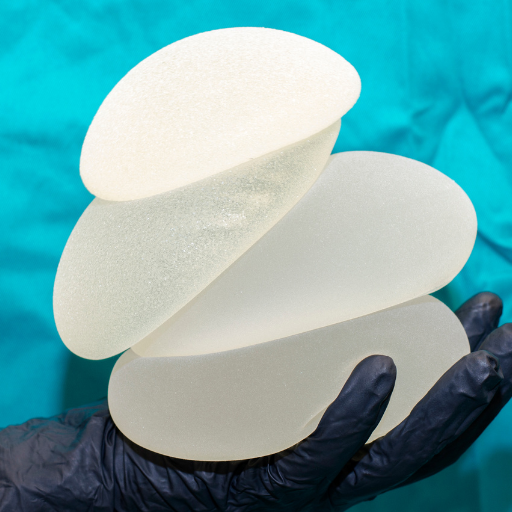
The superiority of Silicone in biocompatibility, vis-a-vis TPE, has made it a desirable material in medicine and the healthcare industry, for use in implants and attachments that need to be in contact with the skin or tissues for a long time. It has a favorable biological inertness concerning toxicity and reactivity and has been stable in biological microenvironments for lengthy periods. On the other hand, TPE is biocompatible to some extent, but in general, is applicable for indirect or short-term contact due to the risk of leaching of the additives when in contact with biological systems. In any case, a proper evaluation of the purpose of the application and the fulfillment of approved regulatory requirements are crucial in selecting the two materials for biocompatible applications.
TPE’s biocompatibility in medical applications
TPE’s biocompatibility in medical uses is quite particular to the formulation of the material used. Specific TPE grades are meant for medical and regulatory compliance such as ISO 10993 or USP Class VI, which look at the risk of cytotoxicity, sensitization, and irritation. These features enhance the use of TPE in short-term uses such as tubing, seals, and medical grips, which have minimal interactions with biological systems. However, the fact that TPE can lose additives during long usage makes it less ideal for long skin or tissue contact when compared to silicone. Scrutinizing the material through testing is important to ascertain its adherence to the guidelines formulated by the regulating body.
Silicone’s established use in medical devices and implants
- High Biostability: Silicone’s useful life in such medical devices or implants is not compromised or affected due to change in temperature, UV exposure or any type of oxidative environment. For such critical applications, the silicone remains stable and works properly due to its properties even after a long time.
- Chemical Resistance: Silicone’s inert feature allows it to withstand a variety of cleansing products and human fluids. Because of this resistance, silicone is great for constructing reusable medical parts that will require sterilization equipment such as autoclaves or other disinfectants.
- Flexibility and Elasticity: The flexibility and elasticity of silicone is an upper hand as it possesses superior qualities, allowing for utilization towards structural components needing to be stressed continually or require forceful exposure. Such characteristics are crucial in placements such as the pacemaker’s leads or prosthetics.
- Biocompatibility: Silicone’s ability to easily adapt to human or animal structures for a longer span of time is well documented, too. Its low chances of biological rejection have approved its usage on several implants and catheters, such as breast implants and drug delivery systems, placing a focus on patients’ safety and durability.
- Customizability: Silicone can take the form of liquid, gel, or even solid, which allows great flexibility for a number of medical purposes. Manufacturers are typically known to alter formulas to achieve certain materials to meet targeted requirements, from soft cushioning to hard structural needs.
TPE vs. Silicone when used for skin contact products
While considering TPE and silicone, It would be good to begin by emphasizing their properties. In contrast to TPE, silicone has superior thermal stability, biocompatibility, and durability, thus making it most appropriate for intensive skin contact and medical purposes. It is also described as drug allergy free, physically and chemically stable to aging to high temperature releasable, even for sterilization purposes. Conversely, TPE is more flexible, economical, and easy to process, making it appropriate for single-use or less complex applications. In the end, it all boils down to expectations, such as how long it will be used, whether it needs sterilization, and what is the available budget.
How do TPE and Silicone differ in terms of flexibility and elasticity?
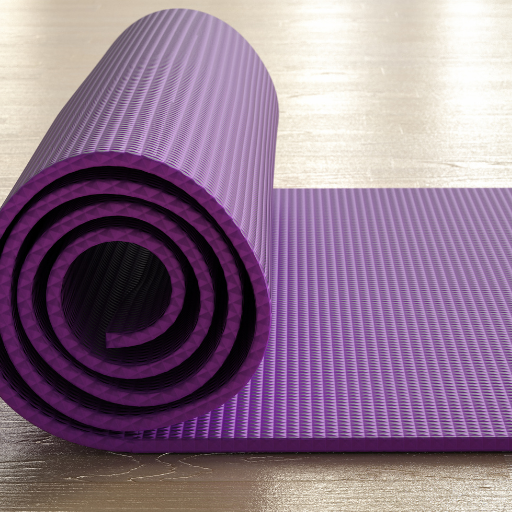
When juxtaposed with silicone, TPE seems to possess greater flexibility and elasticity as a material. This allows TPE to stretch and deform more easily but still regain its original form under stress. Additionally, considering TPE’s flexibility, it is reasonable to assume that such material would be useful in cases where there will be regular movements or bending of the said material. Other than that, TPE being less flexible also means that it is much more elastic and form retaining which would be advantageous within a wider temperature absorption range, TPE is fit for extreme cold or high temperatures. It is worth mentioning that both of these silicone and TPE can be adjusted to enhance or weaken their elastic characteristics. This means that TPE is much preferable for instances where a greater extent of stretch and flexibility is needed. In contrast, silicone is rightly suited for variants that need rigidity and better resistance towards extreme heat or cold.
TPE’s rubber-like elasticity and its elastomeric behaviour characteristics
The reason TPE possesses rubber-like elasticity and exhibits elastomeric behaviour is that it is a combination of thermoplastic and elastomer. Due to the way TPE is manufactured, it possesses high levels of flexibility alongside a low compression set and can withstand and absorb a large extent of impact. Such characteristics enable TPE to be suitable for dynamic uses, which require the material to be repeatedly stressed or deformed. Regarding other polymers, TPE has a durometer within the range of 20A to 90A. Due to this, materials with a wide range of hardness levels can be created. Not only that, but depending on the type of TPE material, tensile strength can also be fully different. It could vary between 5 to 30 MPa, which means that the level of elasticity and durability in the molecule is distinctly high.
This material also shows quite a good resistance to many chemicals including water, many acids and alcohols, and also performs well over a moderate range of temperatures,-30°C to 120°C or thereabout. Because of these properties, it is very suitable for use as seals, grips, and gaskets since elastomeric behaviour is advantageous to its application. Also, TPE can be made using conventional thermoplastic methods such as injection extrusion. This provides a more cost-effective means of production than normal rubber compounds. Its ability to be recycled also makes it more efficient in terms of its usage.
The interesting elasticity and stretch recovery of silicone
It is important to note that silicone has remarkable elastic recoverability and flexibility. It is also very beneficial in applications that have to be performed multiple times with stress applied to them. It offers relief from compressive forces and retains shape even after application of extensile forces for a long period and in either dynamic or relatively static conditions. This material has great thermal stability and performs well within a wide range of temperatures, usually between -50°C and 200°C. Again, Silicone has excellent chemical resistance to ozone, UV radiation and other environmental factors, hence will be of great advantage in outdoor and industrial applications. Similarly, its biocompatibility also makes it suitable for use in medical and food-grade products. All these properties unite in silicone to lend it the capabilities necessary in critical performing applications.
Selecting the Right Gasket and Seal: TPE or Silicone
My choice between TPE and silicone for seals and gaskets always comes down to the application’s specific requirements. This is essential for applications subjected to high temperatures. In instances of high temperatures TPE must be Ventilated Wide Band Antenna, TPE has good environmental stability, UV and, ozone resistance making it more applicable for outdoor and industrial application. Also, it has good elasticity and biocompatibility, two very important features of medical and food grade applications. In contrast, TPE is easier to form, less expensive, and provides good flexing and chemical resistance for low pressure applications. For dynamic or harsh conditions where a long-term reliable performance is a must, TPE is generally the most suited option. However, in less complex environments or when the priority is production speed, the TPE is a better option.
What are the cost implications of using TPE vs Silicone?
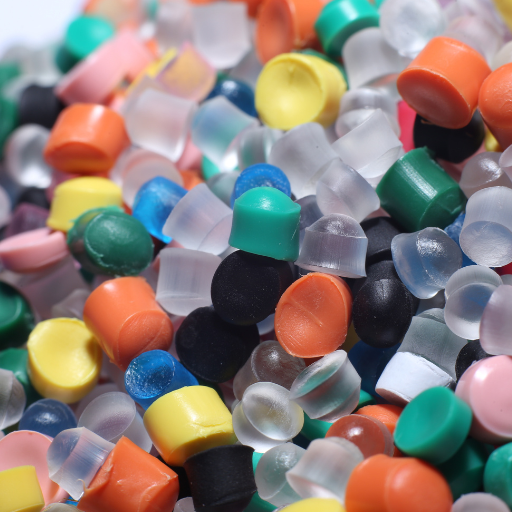
Economically, TPE and silicone depend on certain parameters that govern their cost, such as the cost of the material, the mode of processing, and the mode of application. TPE is on the higher side more economically as it has lower prices of the raw materials needed, and the manufacturing processes are simpler, which lowers the total cost of production. On the other hand, the cost of silicone is high because of costly curing processes and raw materials. However, silicones can withstand harsh conditions, making the higher purchasing cost justifiable in the long run as they last for longer periods and are able to reduce the maintenance cost. Therefore, when choosing between the two materials, the upfront costs and the future cost savings resulting from the performance and longevity of the material in consideration for the application area should be fully taken into account.
Raw Material Cost Comparison of TPE and Silicone
From the raw material cost aspect, TPE is less expensive than silicone. TPE’s production cost is more efficient, as it costs less than a kilogram, which is mainly due to the product’s wide availability. Control-grade polymers and complex synthesis methods are required for silicone, which is why it is more expensive. Due to the difference in cost, TPE is more suitable for bulk manufacturing, where cost is a major constraint. On the other hand, silicone is suitable for custom applications in which practicality surpasses the purchase price.
Manufacturing cost differences: TPE injection molding vs Silicone processing
TPE injection molding is widely recognized as the most cost-effective option because it achieves lower processing temperatures and reduced cycle times. This feature enhances energy management and improves productivity within the manufacturing framework. Silicone processing, however, often revolves around the additional requirement of succeeding steps such as curing and specialized equipment, thereby raising the cost level. Despite the expanding range of applications for silicone on superior material properties, silicone is significantly more expensive for mass manufacturing than TPE where economic factors are a priority.
Long-term cost considerations: Durability and replacement frequency
When considering long term costs, I focus mostly on the product’s durability and how often a replacement would be made. An example of a more durable item would be one that is more costly initially. Still, because of its longer use, it may result in fewer repurchases, hence very few overall costs incurred. On the other hand, non-durable choices are more likely to result in regular replacements, meaning they would ultimately cost more. All of these aspects allow me to determine the best economically viable solutions regarding a balanced quality and cost strategy.
Reference sources
Frequently Asked Questions (FAQs)
Q: What is the primary difference between silicone and TPE?
A: The primary difference is that silicone is a synthetic rubber known for its durability and heat resistance, while TPE, or thermoplastic elastomer, is a copolymer that offers flexibility and softness, making it suitable for various applications.
Q: What are the properties of silicone vs TPE?
A: Silicone is highly durable, resistant to extreme temperatures, and does not degrade easily, whereas TPE is soft and flexible but may not withstand high temperatures as well as silicone.
Q: Can silicone and TPE be used interchangeably in various applications?
A: Not necessarily. While both materials can be used in similar applications, their specific properties may make one more suitable than the other depending on the requirements of the finished product.
Q: What are the common applications for silicone and TPE?
A: Silicone is often used in medical grade products, kitchenware, and seals, while TPE is commonly found in bottle caps, toys, and automotive parts due to its flexibility and ease of processing.
Q: How does the manufacturing process differ between silicone and TPE?
A: Silicone typically requires curing agents and can be processed through injection molding or blow molding methods. TPE can be processed similarly but is often easier to mold and reshape due to its thermoplastic nature.
Q: Is silicone rubber to help with specific applications more effective than TPE?
A: It depends on the application. Silicone rubber is often preferred for high-temperature applications and where durability is crucial, while TPE may be chosen for its softness and flexibility in consumer products.
Q: What should I consider when choosing between silicone and TPE?
A: Consider the specific requirements of your application, such as temperature resistance, flexibility, durability, and whether the product will be subjected to wear and tear. Contact us for expert guidance on selecting the right polymer material.
Q: Can TPE be melted and reused like plastic?
A: Yes, TPE can be melted and reused in various injection molding processes, unlike silicone, which cannot be melted and must be cured to form its final shape.
Q: What are some similarities and differences between LSR and TPE?
A: LSR (liquid silicone rubber) shares some similarities with TPE in terms of flexibility and processing ease. However, LSR generally has better heat resistance and durability compared to TPE, making it suitable for more demanding applications.

